Subfamily Scorpioninae | Scientific name Pandinus Rank Genus | |
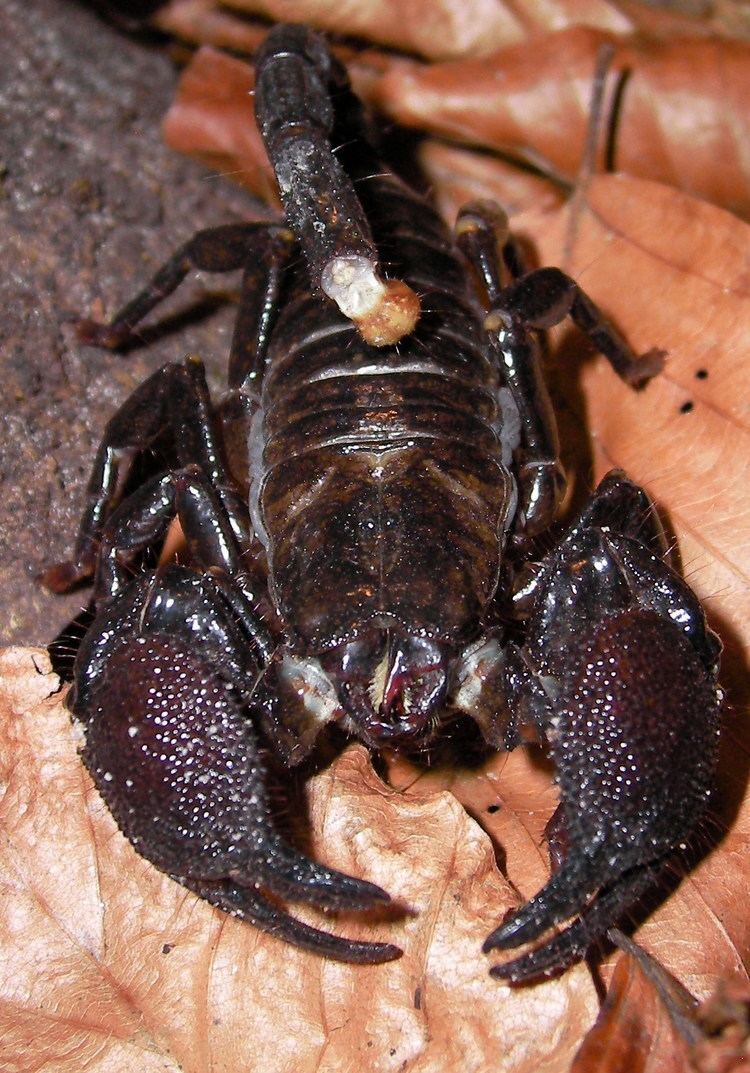 | ||
Lower classifications Emperor scorpion, Tanzanian red clawed scorpion | ||
Pandinus is a genus of large scorpions belonging to the family Scorpionidae. It contains one of the most popular pet scorpions, the emperor scorpion (P. imperator). The genus is distributed widely across tropical Africa and the southwestern Arabian Peninsula (Yemen, Saudi-Arabia).
Contents
- Emperor scorpion pandinus imperator
- Taxonomy
- Diversity
- Subgenus Pandinus Thorell 1876
- Subgenus Pandinurus Fet 1997
- Subgenus Pandinopsis Vachon 1974
- Subgenus Pandinoides Fet 1997
- Subgenus Pandinops Birula 1913
- Doubtful species
- General characteristics
- Toxicity
- Habitat
- Conservational status
- In captivity
- References
Emperor scorpion pandinus imperator
Taxonomy
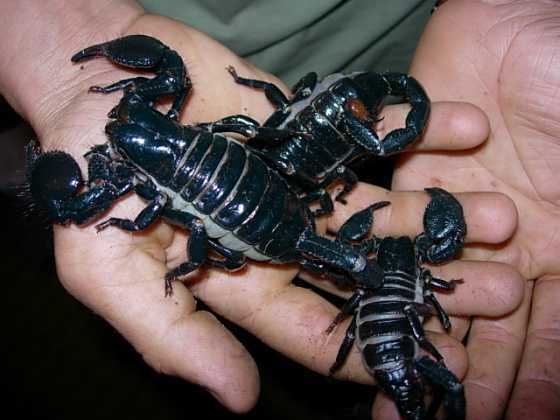
The genus was introduced in 1876 by Tamerlan Thorell. Subsequent research subdivided the genus into five subgenera, however recent studies doubt on these subgenera to represent natural groups.
Diversity
Currently 21 species are recognized within this genus:
Subgenus Pandinus Thorell, 1876
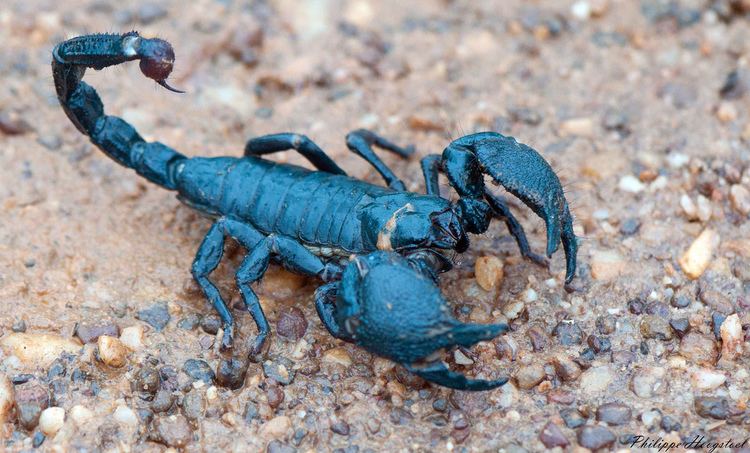
Subgenus Pandinurus Fet, 1997
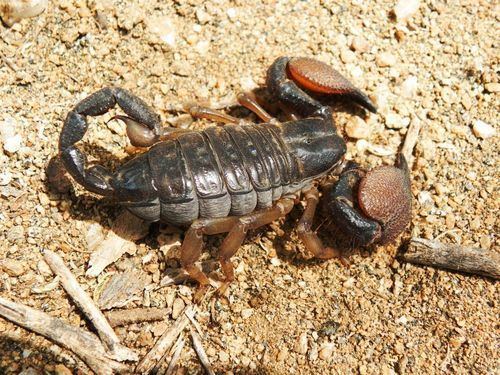
Subgenus Pandinopsis Vachon, 1974
Subgenus Pandinoides Fet, 1997
Subgenus Pandinops Birula, 1913
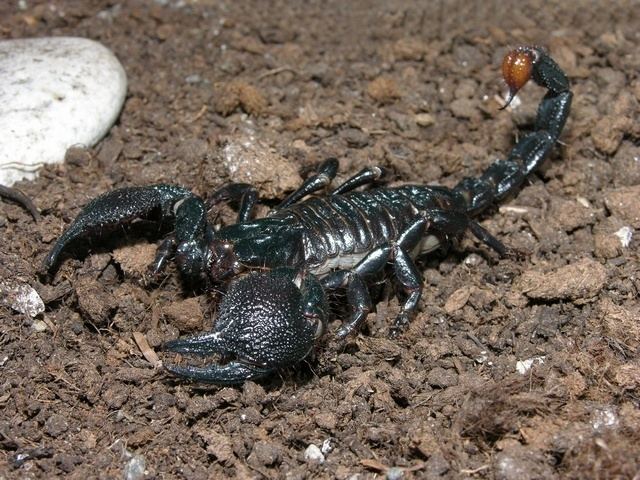
Doubtful species
Pandinus boschisi Caporiacco, 1937, known only from one, presumably lost specimen from Somalia, is considered a nomen dubium.
General characteristics
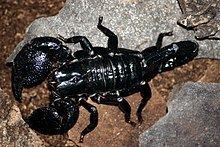
Members of Pandinus are generally large sized scorpions (c. 120–200 mm total length), which are dark to black colored, sometimes with paler metasoma and legs. The pedipalp pincers are massive while the metasoma is proportionally thin with a small vesicle and stinger (aculeus). They possess a stridulatory organ, composed of a rough area on the first segment (coxa) of the pedipalps and a 'scraper' made of bristles on the first segment of their first pair of walking legs. Scraping these bristles on the rough zone produces a scratching sound. Genera of the subfamily Scorpioninae are extremely similar to each other and Pandinus is especially close to the south-east Asian genus Heterometrus. They differ mainly in details of the stridulatory organ and sensory bristles (trichobothria).
Toxicity
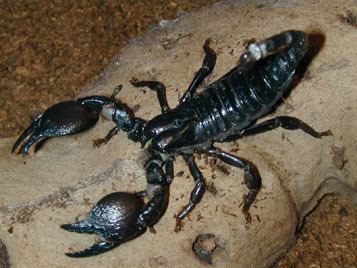
As in other Scorpionidae, the venom of Pandinus species is rather mild, human fatalities are unknown. Symptoms are mostly restricted to local pain, described similar to those of a bee sting. At least P. imperator rarely stings at all, and often prefers to use its massive pincers for prey capture and even for defense. The defensive behavior of the other species is not yet studied in detail.
Habitat
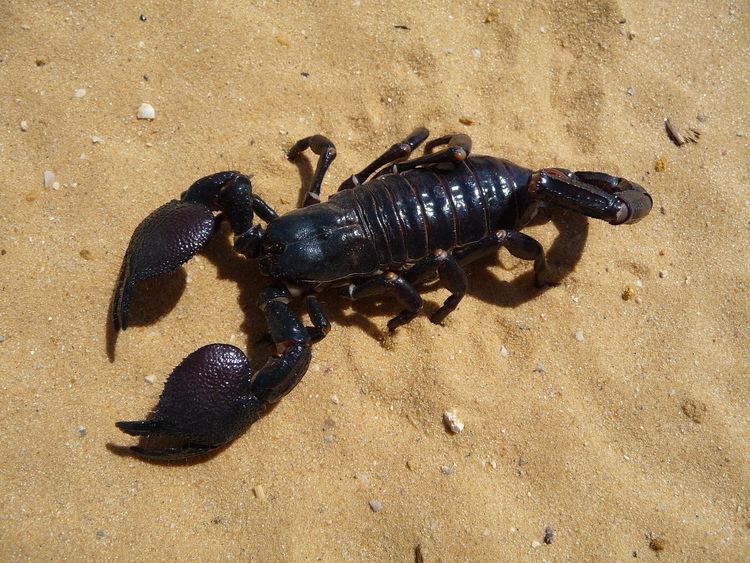
Most species live in humid tropical low-land regions. They occur in rain forest, gallery forest near rivers and other woodlands aside of savannah habitats. Arabian species also occur in semi-arid climates. Soft, loamy soils seem to be preferred by most species but ecology is only well known for the forest-living P. imperator.
Conservational status
Three species of Pandinus (P. imperator, P. dictator, and P. gambiensis) are the only scorpions which are listed by the CITES Appendix II since 1995, due to overly exploitation for pet trade from the wild. Export quotas have been issued for P. imperator by several countries in West Africa (including Benin, Togo, Niger, and Chad).
The CITES-listing has been conceptually criticized for protecting three species, of which only one (P. imperator) is frequently exported for international pet trade. On the other hand, several other, unprotected species are also harvested for export, especially P. cavimanus and P. viatoris in Tanzania. Even in countries with effective quotas, the origin of traded specimens either from farms or from the wild is hardly traceable. Beside of over-harvesting, the species are most endangered by habitat-destruction due to deforestation. Traded specimens are sometimes labelled "Pandinus africanus". This name is an invalid synonym for P. imperator and apparently used to avoid CITES regulations for this species. However, other - unlisted - species were also traded under this name.
In captivity
The large size, its docile and gregarious behaviour, partly diurnal activity and mild venom make P. imperator the most popular pet scorpion. After listing of the species in CITES commercial scorpion farms have been established in several West African countries. A few other species, especially P. cavimanus, are also frequently kept in captivity.
